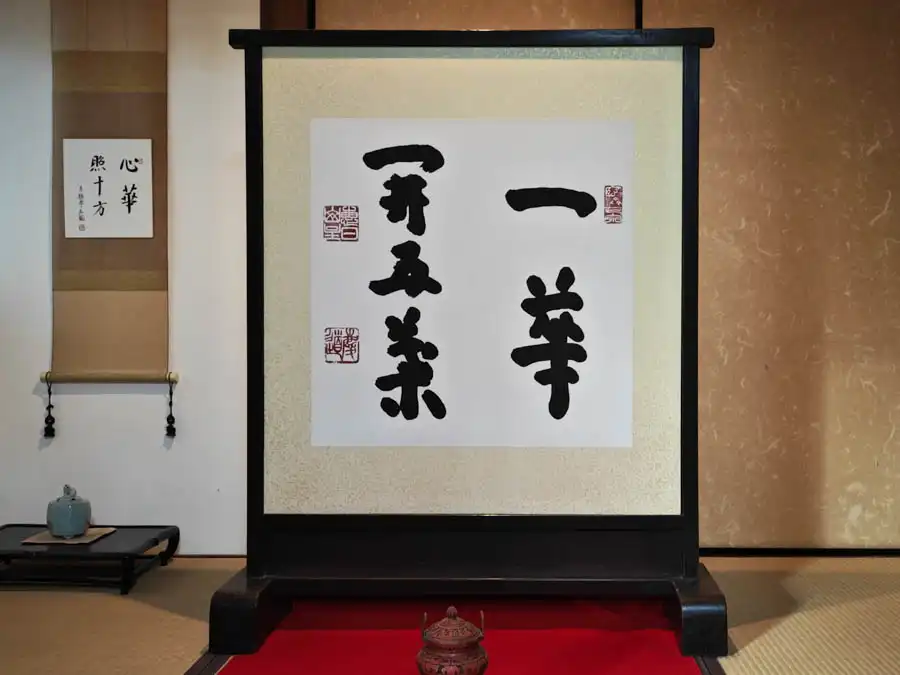Nestled on the route to Tofukuji Temple, Ikka-in is a hidden sub-temple founded in 1382 by Zen master Tozan. Unveiling its secrets during the autumn leaves season, the temple welcomes visitors to explore its serene charm and engage in tea ceremonies. The name “Ikka-in” stems from the Zen teaching of unfolding one’s mind like a flower with five petals. While typically closed, the temple’s gates open to reveal the exquisite “Ikimatsu-no-niwa” and “Hofutsu-seki no niwa” gardens, created by the renowned gardener Chisao Shigemori. Experience the essence of Zen amidst Kyoto’s autumn splendor here.
This Temple is located on the way to Tofukuji Temple from Tofukuji Station. There are many sub-temples in this area. Tofukuji Temple is extremely crowded during the autumn foliage season. However, many tourists just pass by Ikka-in and do not go inside.

This temple is one of the sub-temple of Tofuku-ji Temple. It was founded in 1382 by Zen master Tozan. The principal image is a seated white-robed Kannon (Muromachi period). The supporting statues are a seated Daruma (Edo period) and a seated Amitabha Nyorai (Edo period).
The name “Ikka-in” comes from the phrase “Ikka goyo ni hiraku” (“Open five leaves for one flower”) in the Denpo chorus given by Master Dharma, the founder of Zen Buddhism, to his disciple, Master Ekai, when he was transmitting the Dharma, the essence of Zen. It is the teaching that just as one flower (Ikka) opens its five petals and eventually bears its own fruit. So one opens the flower of one’s own mind.

This Temple is usually not open to the public. But during the season of autumn leaves, it opens the gate to the public. In this occasion, visitors can also enjoy tea ceremonies.
Gardens
Visitors can also enjoy the “Ikimatsu-no-niwa”, which has only one large pine tree with branches growing out of it on a carpet of moss.

And On the north side of the hojo is the “Hofutsu-seki no niwa”. This garden was created by the gardener Chisao Shigemori. He is a grand son of famous gardener Mirei Shigemori.

These two gardens represent the Zen saying, “A crooked pine tree that looks very much like a dragon, but is not a dragon. The stone is not a tiger, but a stone, although the spots are similar.
Nearby spots from Ikka-in Temple
If you cross Gaunkyo Bridge, famous for its autumn foliage, Tofukuji Temple is just a short walk away.
Reiun-in Temple is another sub-temple located just a short distance away.
Related articles:
[…] Ryogin-an, Nanmei-in Temple, Komyo-in Temple, Bishamondo Shorinji, Manjuji Temple, Fundain Temple, Ikka-in Temple, and Sokushu-in […]
[…] nearest sub-temple is Ikka-in temple. Ikka-in temple is open to the public for a limited period of […]